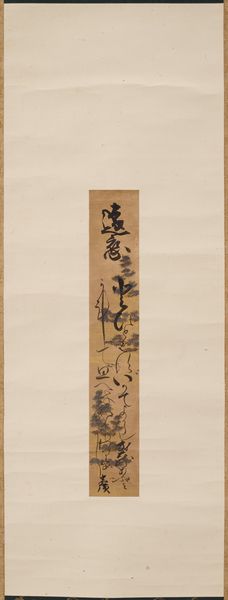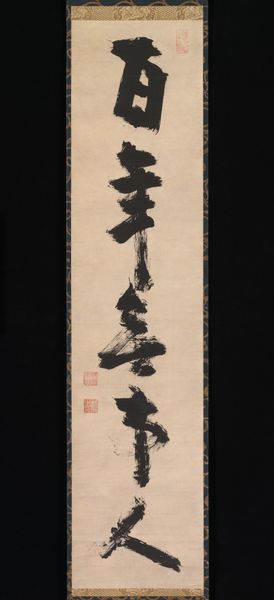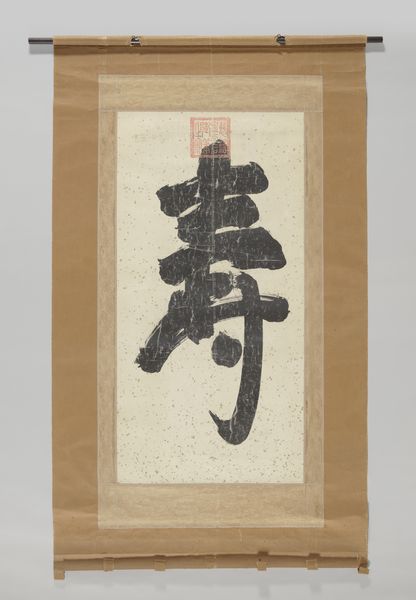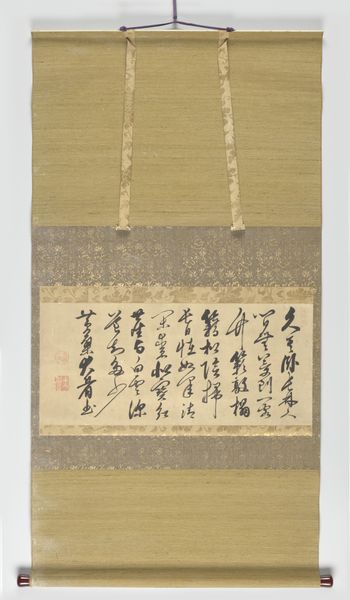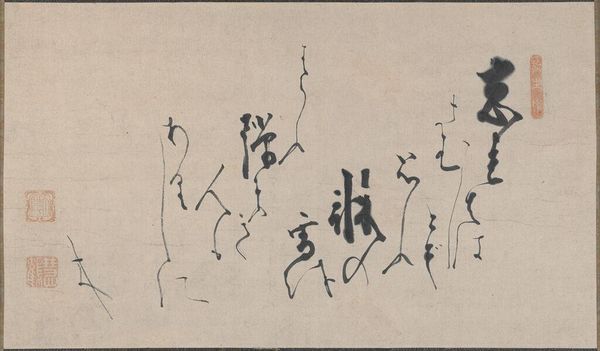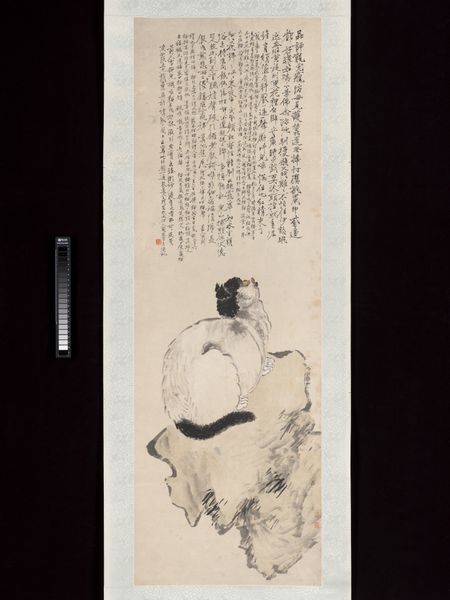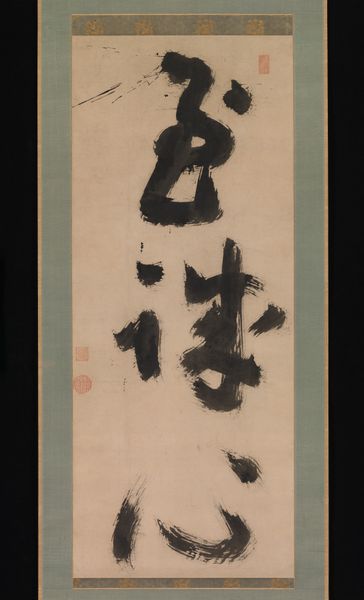
Dimensions: height 100 cm, width 50.2 cm, height 175 cm, width 42 cm, height 8 cm, width 51.5 cm, depth 8.5 cm
Copyright: Rijks Museum: Open Domain
Curator: At first glance, this is deceivingly simple. It almost feels childlike, but also quite deliberate. Editor: Indeed. We are looking at "Snail," an ink and watercolor work on paper created by Suzuki Shonen, dating anywhere from 1859 to 1918. It's currently housed here at the Rijksmuseum. Curator: It’s the kind of work that really asks you to consider the artist's process. The very gestural marks that construct the snail's body. How was the ink manipulated, absorbed by the paper? Editor: And what about its place in the ukiyo-e tradition? Prints and paintings like these weren’t created in a vacuum. The consumption and distribution networks… who was this artwork made for? What kind of cultural status did Suzuki Shonen enjoy? Curator: Right, we can't ignore how this imagery resonated during that period, what connotations a snail had for audiences then. Though honestly, I can't help but get drawn to the sheer economy of means here. It's just ink, paper, water... and yet there’s a clear mastery of conveying form. Editor: Absolutely, that simplicity served specific socio-cultural roles too. Works like these became a tool to display knowledge of aesthetic traditions in both artist circles and within affluent society at large. And look at the calligraphy alongside the image; these kinds of art forms were never truly separate. Curator: It forces us to question the perceived value assigned to “high art” versus “craft”. Ink drawings like these challenge such divisions and the labour involved in making them, doesn't always get the visibility or credit it deserves. Editor: Exactly. Art production always intertwines with patronage, economics, and the prevailing artistic standards. Considering "Snail", alongside Suzuki Shonen's other works, gives us a sharper insight into these societal currents during his life. Curator: Mmh. This glimpse at material ingenuity alongside larger historical currents—I’d say we have new perspectives to carry along with us now. Editor: Indeed. There’s a lot more to a humble snail than first meets the eye, or even in the historical texts themselves.
Comments
rijksmuseum about 2 years ago
⋮
With energetic brushwork Suzuki Shonen enlarged the snail until it filled the picture plane. This bravura is also expressed in the enormous signature, and emphasized again in the text of the seal: ‘one sheet out of a thousand, painted in a one day.’ Shonen would have been a young man when he accomplished this tour de force.
Join the conversation
Join millions of artists and users on Artera today and experience the ultimate creative platform.

